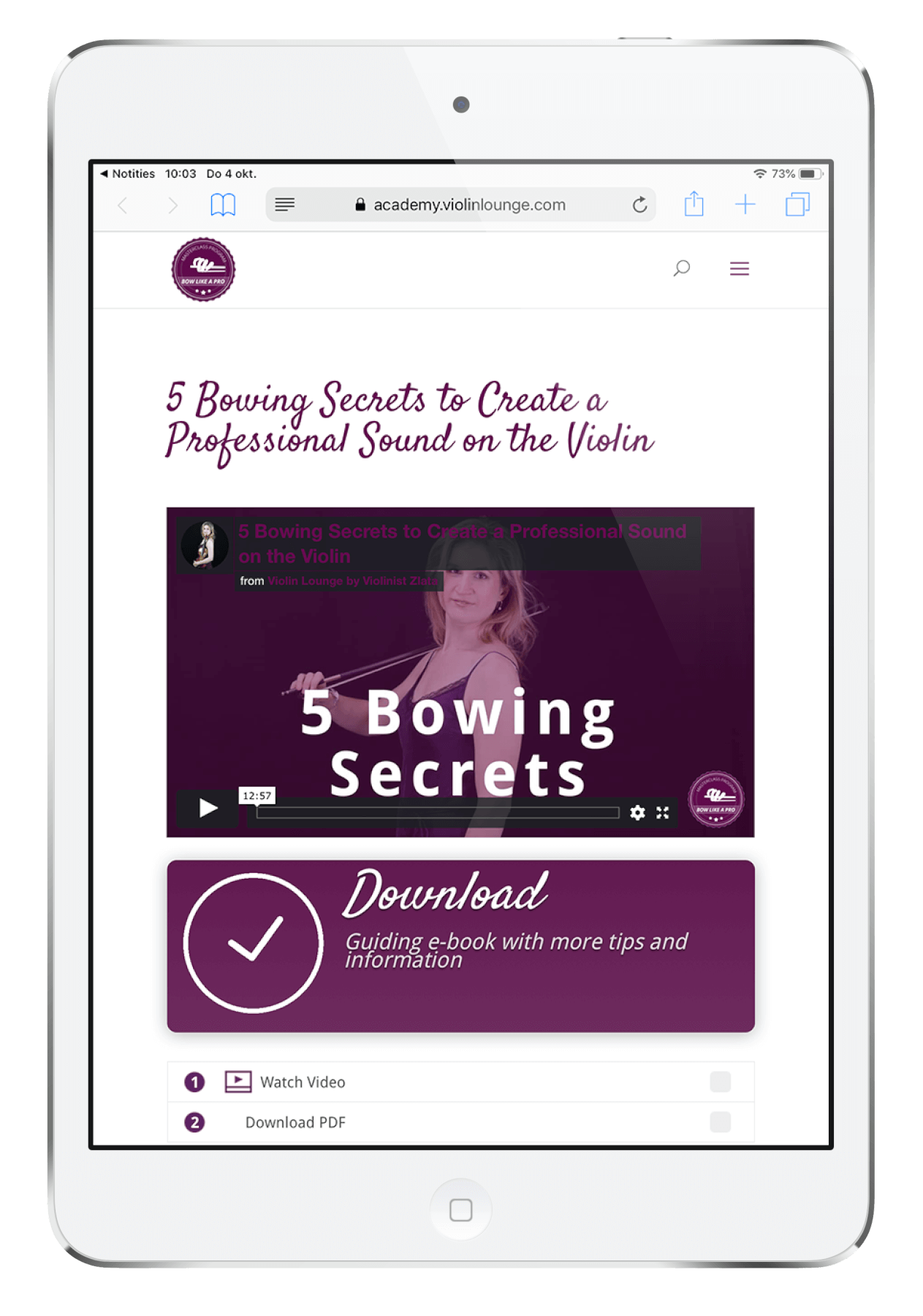How to Stop Surface Noise on the Violin and Create a Deep Sound | Violin Lounge TV #367
This video gives you some tips to stop that superficial sound on the violin and create a beautiful full tone instead:
Before applying the tips in this video in your playing, identify what your problem really is
The cause of surface noise or a whistling sound is usually too little weight and too high bow speed.
The cause of scratching and squeaking is usually too much weight and too little bow speed. I show you the difference in the video.
If scratching or squeaking is the problem, watch this video on how to make the E string sound good and this video on scratching and squeaking in general.
You have to apply the right proportions of speed and weight.
Lots of violin players get a superficial sound by trying to avoid squeaks and scratches
Besides weight and speed, it’s also important to know how much hair you use ideally.
By tilting the bow towards the scroll, you play with less hair and that sounds softer. This should be applied deliberately and not be a habit. It can also sound superficial.
You need to know where on the bow you play something.
Near the frog you have more power and near the tip you’ll automatically sound softer.
Bowing with an even consistent sound means bowing with uneven weight!
Thought you were done? Nope, there’s contact point!
This is the place on the string. Near the bridge you get a bright sound and near the fingerboard (or above the fingerboard) you get a softer muffled sound.
Is this interesting? Help me by sharing this on Twitter:
Improve your violin bowing technique
Enjoy my FREE mini Masterclass 5 Bowing Secrets to Create a Professional Sound on the Violin

Hi! I'm Zlata
Classical violinist helping you overcome technical struggles and play with feeling by improving your bow technique.
Have you already found your tone production problem? Or the key to making your sound even more beautiful than it already is?
Summary of the 5 factors that you need to balance for a great sound on the violin:
- Weight: you transfer from your arm through your index finger to the bow using the bow and string as a spring system
- Speed: the speed in which you move the bow over the string
- Hair: whether you tilt the bow or not
- Place: where on the bow you play something
- Contact point: place on the string


Thank you
Lots of factors to think about from someone who can explain all the elements well
Glad it’s helpful, Angela!
Well my Dear Zlata, you have just impressed me with your multiple issue juggling act that uses only one bow. How can one bow be doing so many things at once, in different places that are constantly changing at every bow location, just to retain a nice, pleasing and uniform sound? You make it look so easy and, since you know exactly how to “undo” those sounds, in different ways to make them “less nice”, you make the corrections seem “obvious” through your juggling technique. We also heard several “comments” from the twins, but you have learned to carry on in spite of such enthusiastic applause to finish your performance: Another valuable lesson for us to use during practice. It’s hard to put numbers on these issues, especially since all instruments and bows have their own personalities that we have to learn to live with. By getting a “feel” for their “quirks” we can learn to deal with them, to charm them to give us what we want, and you somehow made that clear in this video. Not 2, but too… too heavy, too fast, too light, too slow, pressure point too far off… Thank you for showing us how “easily” (?) we can handle these problems… especially by understanding their causes. You “obviously” put lots of work in this “simple” video Zlata, and we love you for it.
Thank you, John, I’m glad it’s helpful although it’s a personal search for everyone :).